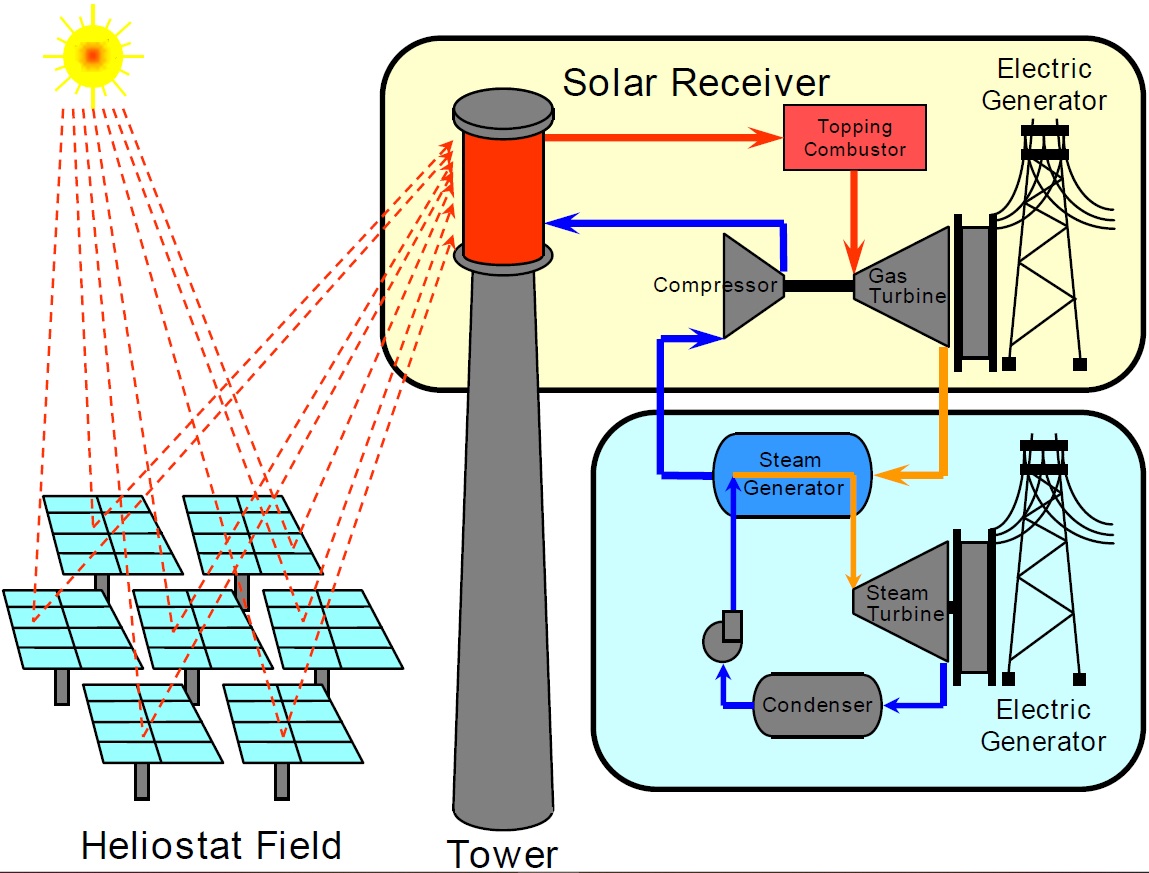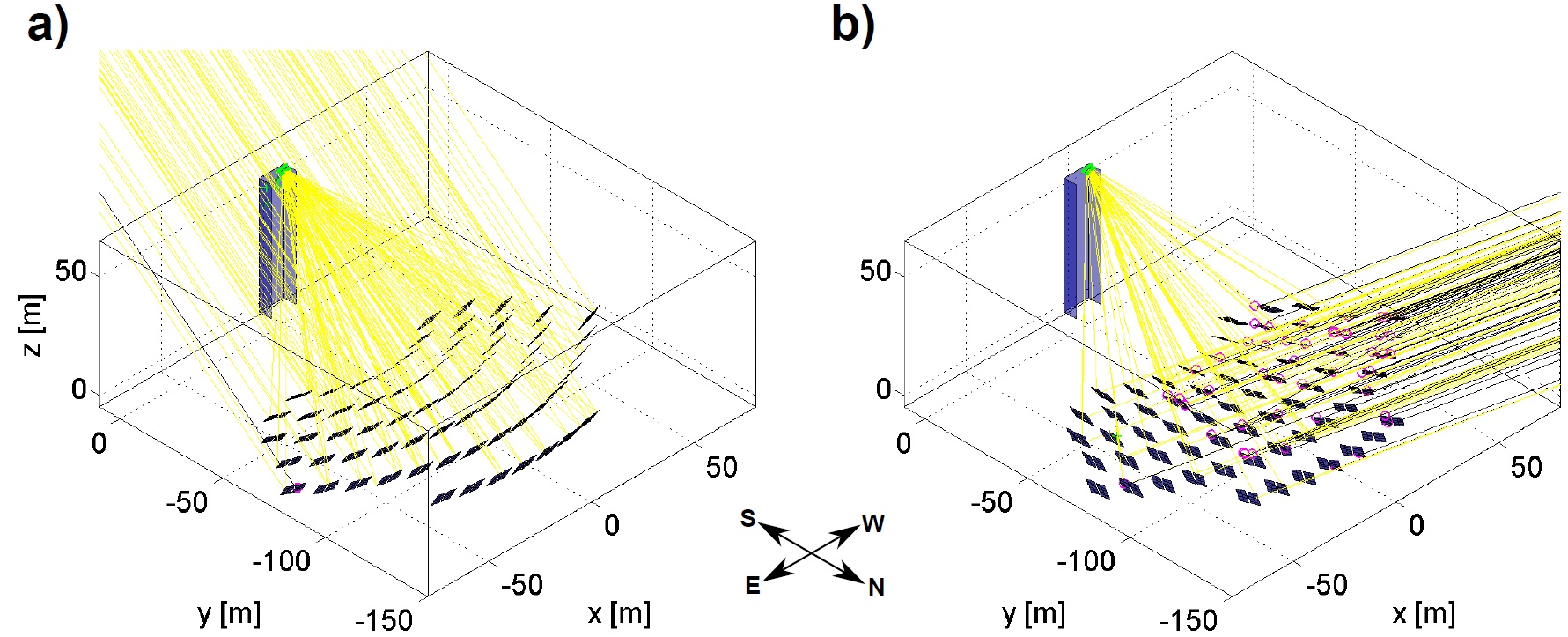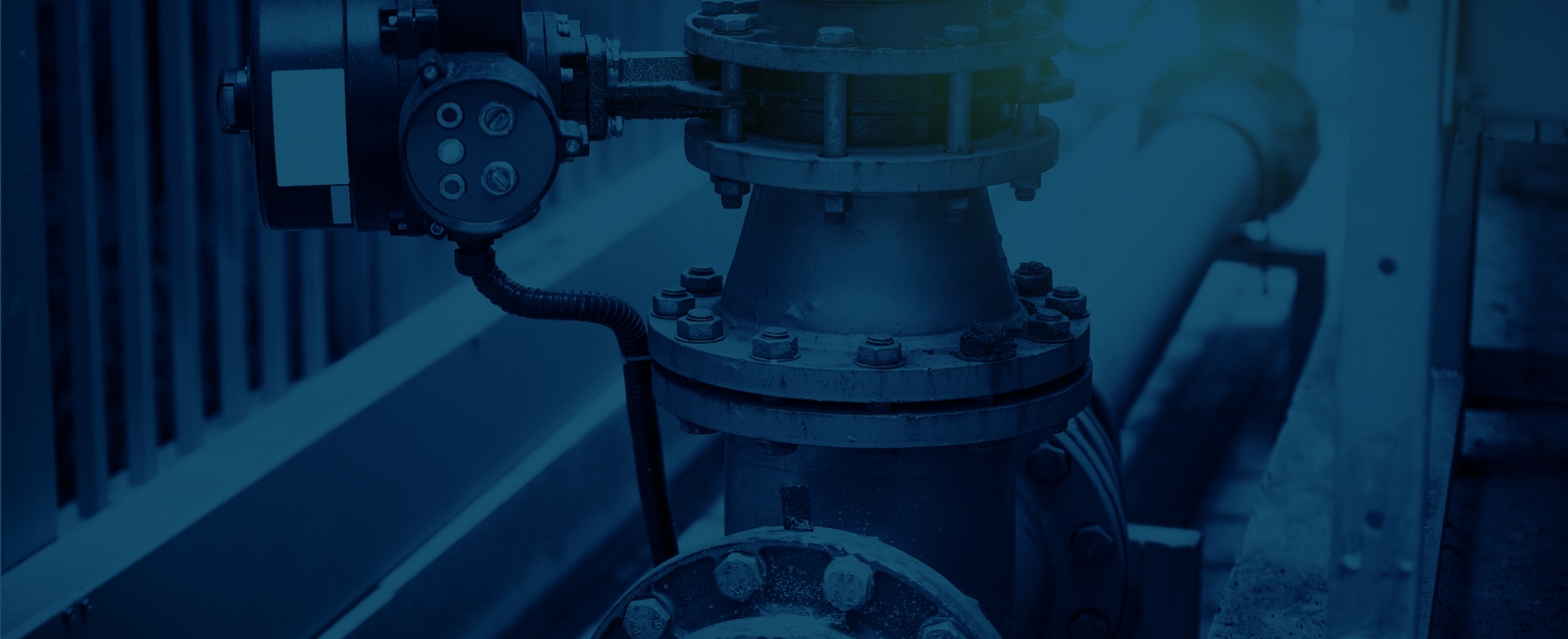The increasing worldwide debates to mitigate global warming leads to an increasing demand of renewable energy sources for industrial power supplies to reduce the CO2 content in the atmosphere. Additionally, global warming leads to an increasing scarcity of fresh water. Therefore, the worldwide demand on alternative water supply systems is also increasing. A possible solution to both problems are desalination plants based on solar energy. Centralized desalination plants further increase the demand on water transportation systems which distribute the desalinated water to the final consumers.
The schematic below shows concentrated sun rays as heat source for vaporizing water to steam to feed a power plant for
the electricity production with turbines and generators. This technology called
Concentrated Solar Power (CSP) is still considered as
novel since the industrial application of this technology is not wide-spread
yet. As conventional CSP aims to vaporize water to steam to feed a
steam turbine with low efficiency (solar to electric ~30%), the approaches developed in the recent years increase the sun ray concentration (~1000 suns) to run a
combined cycle (driving steam AND gas turbine) power plant with a solar to
electric efficiency of about 65%. Since water is evaporated, this technology is also applicable on desalination plants like conventional Multi-Effect Distillation (MED) plants. The disolved salt in the sea water is separated from the pure water by evaporation. As for thermal CSP plants, a hybrid solution which incorporates the power generation and desalination process can be applied, called MED-CSP plants.

PIPELAB engineers are capable to use an elaborated and validated Monte-Carlo ray tracing
software that allows to simulate the sun concentration for any kind of
heliostat mirror geometry. The below 3D model including some simulated sun rays
(illustrated in yellow) with a) the sun rays at noon and b) with the sun rays
during the evening on a representative summer day for a representative dry
location on the Northern hemisphere with 64 heliostats is
shown. The black lines show the sun rays that are blocked by the neighboring
heliostats and which, therefore, do not reach the target (i.e. the Solar
Receiver located on the top of the Tower). By conducting a proper Monte-Carlo ray tracing investigation the optical efficiency can be determined. As the optimum design of such a solar tower facility depends on several factors, a tailor made solution by an expert is required.









